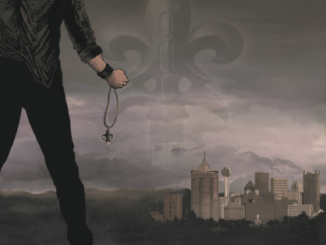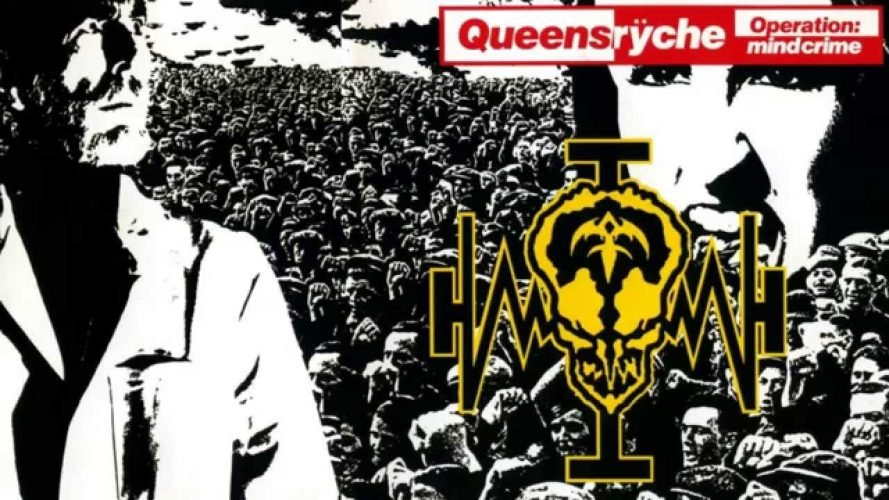
On May 4, 1998, Queensrÿche released their most ambitious record, Operation: Mindcrime, a concept album detailing Nikki’s involvement with a revolutionary organization led by Dr. X who betrays Nikki. By the end of the album, Nikki is addicted to drugs, trapped in a mental institution, and charged with the murder of Mary, the prostitute-turned-nun who supplied him with drugs and whom he has fallen in love with.
The idea for Mindcrime began with Sister Mary. In a February 1989 interview with RIP Magazine Tate states that “My first real memory is the Sister Mary character.” One summer night Tate and Chris DeGarmo were in an Amsterdam (or Budapest) club in the early hours. Among the revelers “was a nun dancing in very slow circles, holding a toy panda, like a child, with her eyes closed” (RIP). In an August 27, 2018 interview with Northwest Music Scene Tate recalls that she held the teddy bear “like a baby that she had lost.” “That image stuck with me,” Tate remembers “and she became our Sister Mary” (Classic Rock 2003).
“The other characters were based on people we met on the road,” according to Tate (RIP). Canada became an important location in the album’s gestation. “In Montreal there were people involved in an underground movement to overthrow the Quebec government, get rid of the English-speaking culture and make it French,” says Tate (RIP). “They were blowing up buildings, bombing cars, and shooting people. This inspired the ideas on the album” and provided plenty of story material (RIP). The overall concept really came together one night when Tate was at a bar named Le Saint-Sulpice. In that bar, Tate “met the man who became Dr. X” (Rock ‘N Roll Insight, April 25, 2017). One winter night on the way home from that bar, Tate came across a Catholic church. He went in, sat down, the story he’d been thinking about “cemented” in his head, and he began writing (Northwest Music Scene).
Nothing occurs in a vacuum. George Orwell’s Nineteen Eighty-Four, a touchstone for this sort of material, may have influenced Tate. Just as Winston from Nineteen Eighty-Four is duped by the very revolution he thought he was supporting, so too is Nikki manipulated and betrayed. Whereas Winston ultimately betrays love interest Julia, Nikki is ordered to betray Mary. The similarity between the term “mindcrime” and Nineteen Eighty-Four’s “thoughtcrime” is too close to ignore. To be clear, these similarities suggest the possibility of a conscious or unconscious influence—not a rip off—of Nineteen Eighty-Four on Operation: Mindcrime. They do not establish plagiarism or suggest unoriginality. The record takes in its own unique direction.
In March, Tate flew to Michael Wilton’s wedding, presented the idea to the rest of the band, and “they all loved the idea” (Northwest Music Scene). However, the liner notes to the deluxe edition of Operation: Mindcrime written by Paul Suter in 2003 state that “when Tate presented the idea to the band of a concept album . . . he was met with a deafening silence.” Tate managed to get DeGarmo to buy into the idea and “as the story was fleshed out and the songs began to come together,” the rest of the band joined in (Suter).
While Tate developed the character of Sister Mary before making the record, “Suite Sister Mary,” featuring Pamela Moore on vocals as Sister Mary, was the last song written for the album (Northwest Music Scene). There are various stories about how the band located and recruited Pamela Moore to record. In one version, DeGarmo met Moore while she was working at a record store. “They would often talk” and one day DeGarmo came in with Tate who asked her if her voice is the one he had heard in “a series of radio commercials” (Rock ‘N Roll Insight). Tate and DeGarmo heard her sing a live show and made the decision to recruit her for the album (Rock ‘N Roll Insight). In another interview, Tate recalls having heard her sing live, thinking she had the voice he wanted for Sister Mary, and calling “her up out of the blue” from Montreal where they were recording (Northwest Music Scene). She requested a tape of the track to see what she could do with it, they sent it, she said she thought she could do it, and they flew her up (Northwest Music Scene). “She did a fantastic job,” he concludes (Northwest Music Scene). In a September 24, 2017 interview, Moore says that DeGarmo and Tate “were looking for a female voice to sing the part of Sister Mary. They heard me singing on a radio jingle for a local music store in Seattle” and “set out to find out who that voice was” (All Music / All Bands). In short, one way or another they heard her voice and asked her to record for them.
The lyrics coupled with the libretto from the VHS boxset of Operation: Livecrime—a live version of the entire Mindcrime album—provide a background and basic overview of Sister Mary. Her backstory is she was “Sixteen and on the run from home / found a job in Times Square / working live S&M shows” (“Spreading the Disease”). She supplements her income with sex work. As the lyrics describe, “Twenty-five bucks a fuck / and John’s a happy man.” “At seventeen she met Father William, who arranged her cloister with ‘Our Lady of Immaculate Pain’” (Libretto). She becomes a nun, which is a refuge from her former life. However, Father William exploits her by expecting sex from her on a weekly basis. The lyrics state, “He takes her once a week / on the altar like a sacrifice.” Father William introduced her to Dr. X “when she was eighteen” and “now she works for him” (Libretto).
In “The Mission” Nikki speaks of Sister Mary as “the lady that can ease / my sorrow.” He believes that “My love for her / will help me find my way” (“Spreading the Disease”). Some of this bond is based on her supplying him with drugs. As he explains, “She brings the only friend / that helps me find my way” (“Spreading the Disease”). Later, the libretto tells us that Dr. X drives up alongside Nikki and lowers his electric window. The beginning of “Suite Sister Mary” picks up from there and Dr. X says, “Kill her . . . and get the priest as well.” Nikki shoots the priest but cannot bear to kill Mary. He realizes that the two of them are “being used and fed like, / like rats in an experiment” (“Suite Sister Mary”). The libretto informs us that Nikki “pulls away, vowing to kill Dr. X and set them both free of their master’s manipulations.” Meanwhile, Mary struggles with her history of trauma and abuse. The lyrics suggest that Nikki and Mary finally consummate their relationship. Nikki says, “”Your precious cross is gone / it made me wait so long / for what you gave to everyone.” Those lyrics also indicate that Mary may not be wearing her set of rosary beads, which is an important point. If not, where is it? Who has it? As we shall see, this is a significant point. Also, the absence of the beads suggest Mary has begun to lose her own faith. The libretto explains that “Mary is plagued by the vision of Nikki turning into Father William” and “the memories come flooding back. Years filled with men who had used her, degraded and beaten her.” Although “she thought Nikki was her hope,” “now he seemed like all the rest” (Libretto). “She hated life,” the libretto concludes.
“The Needle Lies” narrates Nikki’s unsuccessful attempt to break free from Dr. X. The libretto tells us that “Unable to shake his addiction, and feeling beaten in his confrontation with Dr. X, Nikki returns to Mary.” Calling for Mary, “he finds her dead in her room” (Libretto). After finding her dead, Nikki has a mental breakdown, and “runs like a raving madman through the streets” (Libretto). Eventually, Nikki is “charged with several murders” and “committed to State Hospital.” The narrative now brings us to the start of the album (Libretto).
The only real clue the lyrics contain about who killed her comes from the lyrics for “Eyes of a Stranger” in which Nikki says, “Your rosary wrapped around / your throat,” indicating she was strangled to death. We also know from “Suite Sister Mary” that Dr. X wanted Mary killed because “You know too much for your own good.” If we follow and trust Nikki’s narration, then we must conclude Nikki didn’t do it and Father William didn’t do it. Although the police will think the killer is either Nikki or perhaps Father William, the only logical suspect we have is Dr. X since he wants her killed and is the only person that has any reason to want her dead. If we consider the chronology, Dr. X has to reach and kill her after his confrontation with Nikki but before Nikki’s return. That’s possible. Strangling her with a set of rosary beads indicates frustration and anger with her and Nikki’s botched hit job. Since she’s a nun, it’s something of an insult to kill her with rosary beads and death by asphyxiation takes longer, take more strength, and is a kind of torture and punishment. Who is angry with Mary? Who wants her to suffer? Again, these actions, emotions, and motivations are consistent with what we know about Dr. X. However, as the murder happens in Nikki’s absence, there is no way to be absolutely certain based solely on the lyrics.
A month after the album’s release, a June 6, 1988 article in Metal Hammer appeared in which Chris DeGarmo gives a track-by-track summary. His analysis of “Electric Requiem” is particularly revealing, indicating Mary’s murder is unsolved. He explains that “Nikki comes back to the church and finds Mary dead, hanging by her rosary, y’ know. There is a bit of mystery here. You don’t quite know who killed her. Was it X or Nikki?”
Queensrÿche would build and incorporate this doubt into a promotional package for Video: Mindcrime, a collection of videos from Operation: Mindcrime. On October 21, 1989, the “Queensrÿche Solve the Mindcrime Contest” appeared on MTV’s Headbangers Ball. The narrator announces that “There are fundamentals of criminal investigation” including “identification of the victim.” Then the name “Mary” appears on the screen followed by a video clip of her. The voice then says, “suspects” and dossiers with Dr. X’s and Nikki’s photographs appear. DeGarmo asks, “Who killed Mary?” and Tate responds, “You’ll have to find out for yourself.” The video for the contest explains that “one winner and guest will be flown to a mystery location, equipped with leather tour jackets and a full dossier, including autographed copies of Exhibit A, Video: Mindcrime. It will be your duty to interrogate Queensrÿche for forty-eight hours.” To win actually all one had to do was send in their name, age, address, and phone number—not solve Mary’s murder. Presumably, the winner and guest would then get their chance to gather information, interpret evidence, work over the members of Queensrÿche at length, and attempt to break the case. Five runner-ups would receive tour jackets and twenty-five others would get autographed copies of Video: Mindcrime. Karen Vanselow was announced as the grand prize winner on the November 18, 1989 episode of Headbangers Ball. The details of the visit remain classified at this time, as best I can tell.
Let’s review the version of Video: Mindcrime contained as a DVD from the deluxe edition of Operation: Mindcrime and see what evidence we can find to crack what was apparently an unsolved case. The video for “Operation Mindcrime” further establishes Nikki’s use and dependency on drugs. Although the lyrics contain drug references such as “Give me one more vein,” “Had a habit doing mainline,” and “We’ll send someone over / to bring you what you need,” seeing Dr. X actually push a package over to Nikki helps make it clearer.
In the video for “I Don’t Believe in Love,” Dr. X approaches Mary with a set of rosary beads drawn taut between his hands, which suggest that he strangles her. When Nikki finds her dead body, it’s not obvious what killed her; we only see a bit of blood trailing down the corner of her mouth and there is no visible murder weapon. A quick sequence of Mary depicting her earlier occupation as a sex worker shows her with rosary beads around her neck. Where were those when Nikki last saw her alive and where are they now?
The after-credit alternate version of “I Don’t Believe in Love” opens up possibilities for other suspects beyond Dr. X. In this version there is a brief flash of Father William holding the rosary beads just like Dr. X who then appears holding the rosary beads. Did Father William murder Mary out of jealousy and/or anger because he saw Nikki and Mary having a romantic/sexual moment? Could Father William have been ordered by Dr. X to kill Mary after Nikki failed to do so? Nikki kills Father William while Mary is still alive, so the chronology prohibits this sequence of events. Another way to consider this overlap of images is that Dr. X and Father William have the same manipulative personality and both use and bring harm to Mary one way or another. They are cut from similar cloth. Just as Dr. X betrays Nikki, Father William betrays Mary, and both use Mary for their own ends. The visual overlap reinforces a literal overlap between Dr. X and Father William.
Another disturbing possibility arises. Close to the end of the video, the word suicide appears just before an image of the dead Mary. Could Mary have killed herself after becoming emotionally overwhelmed by her specific encounter with Nikki and/or the overall situation? The Livecrime libretto explains that Mary and Nikki have sex and during the experience “memories came flooding back” of “years filled with men who had used her, degraded and beaten her.” Nikki “seemed like all the rest. She hated him. She hated men. She hated life.” Overwhelmed with incredibly painful memories and hating life, could Mary have taken hers? If so, she could have strangled herself with her own rosary beads.
Whereas Video: Mindcrime was released July 1, 1989 and does not contain every song from Operation: Mindcrime, Operation: Livecrime appeared in 1991 and reproduces the full album live. The liner notes for Livecrime tell us that it was recorded May 10 through May 12 of 1991, so this is around two years after Video: Mindcrime. How does Operation: Livecrime reinforce and/or contradict these earlier messages and suggestions? How does this fuller, later version inform our understanding of Mary’s narrative and final fate? Well, it doesn’t is the quick answer. Most of the video on the projection screens behind the band come from Video: Mindcrime. The new images add texture and atmosphere, rather than story, to the performance. It’s a great performance; it just doesn’t add any new information.
If you are interested in tracking down any of those older materials, here are some details. Both Operation: Livecrime and Video: Mindcrime are out of print as of this writing and neither one appears in widescreen. With interest in physical materials fading, I wouldn’t hope too much for another (physical) release of these. While the DVD of Livecrime doesn’t include all of the album tracks, it probably give viewers a better understanding of the story overall. The transfer appears to be straight from the VHS and the sound is available only in stereo, except, oddly enough, for the post-credits version of “I Don’t Believe in Love” which comes through in 5.1. Livecrime has all of the album songs as well as two hidden, bonus live songs without live video: “Roads to Madness” and “The Lady Wore Black” (an early precursor to Mary?). The overall sound is both live and good—not too rough, but not too polished either. All of it, including the bonus tracks, is available in 5.1 and the quality of the video looks better than Video: Mindcrime. The credits for Livecrime have a category titled “DVD production” with multiple entries, which suggests some work was performed on the video to enhance and sharpen it. Both have bonus features, but Livecrime has more including the libretto, which is formatted differently than the physical version. In fact, Livecrime has the most content. However, if you are a really into Operation: Mindcrime, you will want both Video: Mindcrime and Operation: Livecrime.
One of the bonus features from Livecrime is a three-part interview with Tate from August 2001, which covers the history of the band, the conception and making of Operation: Mindcrime, and the tour for it. The Tate interview is interesting, but not revelatory. Most of the information you can find in other interviews. A few nuggets we can pick up include Tate wondering if his pull to the church that pivotal night in Canada was a “religious experience” and the name of the club with the nun who was the basis for Mary was The Metro in Amsterdam, but these are not essential details. Tate also says that when he presented the idea for the album to the band during writing sessions, none of them liked it, which contradicts what he says in the 2018 Northwest Music Scene but reinforces the account Suter gives in the liner notes to the deluxe edition of Operation: Mindcrime.
Various press releases appeared in early August 2004 announcing an upcoming Queensrÿche tour consisting of a greatest hits set and a complete performance of Operation: Mindcrime. Some of these also promised a “live preview of material from Mindcrime II” and “live actors.” These announcements also said, “In particular, fans have always asked one burning question in relation to the Operation: Mindcrime plot: ‘Who killed Sister Mary?’ The new album, scheduled for release in 2005, will address that question.” The fall tour was scheduled for October 5 through October 29 of 2004 and billed as An Evening With Queensrÿche (that information comes from the release and further information on tours in this article comes from setlist.fm).
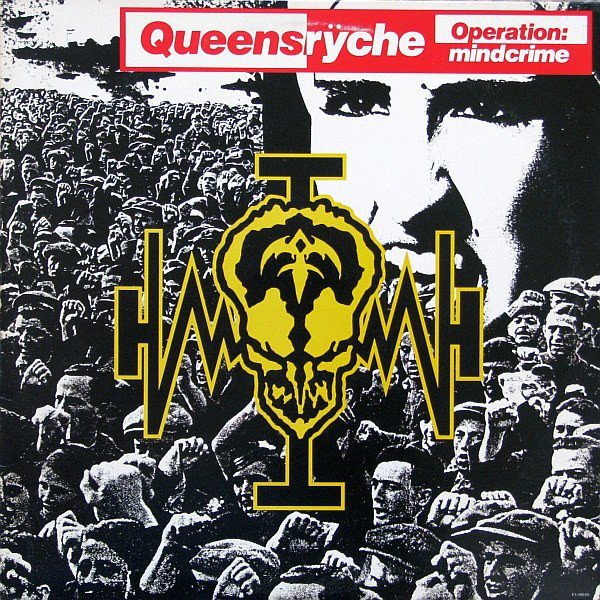
I wanted to catch Queensrÿche on the Building Empires Tour in 1991 during one of the Florida dates, but my two friends and I were unable to coordinate it. I knew Queensrÿche were playing Mindcrime in its entirety with Suicidal Tendencies, but I didn’t realize Warrior Soul also opened until I was researching information for this piece. I eventually saw Suicidal Tendencies perform a heavy set at Floyd’s Music Store in Tallahassee, Florida in 1996 or 1997, though I can’t find any documentation of the show. While I was fortunate enough to finally catch Queensrÿche October 26, 2004 at The Moon in Tallahassee, I cannot specifically recall how they handled Mary’s death, but I do not think it matched with what the next leg of the tour would reveal because I think I would remember the visceral and theatrical reenactment of Mary’s gruesome death. I do remember, however, that it was a powerful show, Tate sounded great, and I am almost certain Pamela Moore performed. As advertised, the first half was a greatest hits set, and the second was a performance of the complete Operation: Mindcrime (I did find a twenty-five minute video from “my” show with a lot of the greatest hits portion and a bit of the Mindcrime set). This was ideal for me as I wanted the hits and Mindcrime. Starting with Promised Land or thereabout, Queensrÿche moved in a direction I couldn’t get into. I was still a fan of the older work and I was intrigued by early talk that they were working on a sequel to Mindcrime. After the show was over, a pre-recorded version of “Hostage” from the upcoming album played. To my ears, it sounded like either a demo or a lower-fidelity copy. At the time, what I heard of “Hostage” made me excited for Mindcrime II (Ultimately, the sequel did not live up to the original for me, and nothing after clicked with me either until the self-titled album with Todd La Torre—but that’s another story).
The show I witnessed in 2004 closely resembled the video I found for a show earlier on April 24, 2004 at the Beacon Theater in New York. The stage is fairly simple, there are no actors and no props, but there are projection screens showing real-time live shots and pre-recorded footage, graphics, and animation. The New York show was part of the Art of Live Tour, which showcased a large chunk, but not the entirety, of Mindcrime.
A new leg began in January 2005. In contrast, the February 2, 2005 concert, also at the Beacon Theater in New York, shows the same stage presentation as the Mindcrime at the Moore footage from 2006. In between, Queensrÿche would take a break from the greatest hits / complete Mindcrime format for a summer tour supporting Judas Priest on the first North American leg of their Retribution Tour. Watching the June 17, 2005 show at Jones Beach Theater, Wantagh New York (New York seems awfully good about filming Queensrÿche shows from this time) of them as a supporting act, Mindcrime receives little representation but the band plays “I’m American” live for the first time. In the fall, they resumed the Evening With Queensrÿche format minus the live rendition of “I’m American” but with the added stage show and reworked presentation featured in Mindcrime at the Moore.
The chronology becomes more complicated. Filmed on October 13, 14, and 15 of October, 2006 during the Operation: Mindcrime II Tour, Mindcrime at the Moore appeared on July 3, 2007 and features back-to-back complete recreations of both Operation: Mindcrime and Operation Mindcrime II, which was released April 4, 2006 about six month before the Moore shows were taped. The live version of the original Mindcrime—first performed on the early 2005 leg—that is on Mindcrime at the Moore, actually give us the specifics of Mary’s death, finally answers the question of who killed Mary poised by the earlier press releases of 2004, and adds a few details.
Mary hands a gun to Nikki during “The Mission.” A new video shows Nikki killing Father William at the beginning of “Suite Sister Mary.” The real revelation, however, is after “The Needle Lies” when Dr. X calls Mary on the phone, tells her to take a gun out of a box beside her, orders her to put the barrel in her mouth and pull the trigger, and she obeys. It’s a jarring and powerful scene. The screen behind her displays a huge blood splatter a split second after she shoots herself (that I think I would have remembered seeing live in 2004 if it had happened). This version contradicts the earlier account of strangulation suggested in both the lyrics and videos for the original Mindcrime. The final version we are left with is that Mary committed suicide by gunshot after being commanded to do so by Dr. X (why is Nikki able to disobey Dr. X’s order to kill Mary, but Mary is unable to disobey Dr. X’s order to kill herself?). After almost twenty years, we finally got the whole story of Mary’s death.
In a December 18, 2012 interview with Pamela Moore, Alison Cohen of Metal Babe Mayhem states, “Fans have been wondering who killed Mary since the original release in 1988.” Moore replies, “I was always wondering the same thing, honestly. So when the rehearsal of the show came about, I finally understood what happened.” Cohen asks, “What type of reaction did you expect/receive when fans learned Mary killed herself during your live performance in 2006?” Moore remembers that “When I performed the death scene live, there were a lot of shocked screams from the audience. I wasn’t quite sure why until I watched Mindcrime at the Moore in its entirety. Wow! What a graphic scene.”
Ultimately, it’s the live fleshing out of the original Mindcrime album that gives us the final details on Mary’s death—not Mindcrime II. The curiosity is that Operation: Mindcrime II doesn’t answer the question at all in either its studio or video/live forms. The plot is really more about Nikki tracking down and killing Dr. X, and Nikki’s feelings and memories about Mary, than about Mary herself or her death.
If we track the history of Mary’s death and put together everything covered so far, we are led to believe by the original Mindcrime album that she is strangled to death but we don’t know by whom. We might suspect Dr. X unless we think Nikki has broken so much with reality that he committed the murder but has no memory of it later. The alternate version of “I Don’t Believe in Love” on Video: Mindcrime establishes or at least very strongly suggests that Mary died by suicide, which is an act of retroactive continuity. The press release for Mindcrime II says that it will address the question of who Mary’s murderer is. However, it doesn’t. The live performance of the first Mindcrime actually does by demonstrating Mary shoots herself after receiving the order from Dr. X. And that version of the live show doesn’t appear until the 2005 leg of the Evening with Queensrÿche Tour.
What accounts for the failed/deferred promise of Mindcrime II to explain Mary’s death and why does the live performance of the original Mindcrime not do so until the second leg? To answer that, we have to look at the making of Mindcrime II and the state of Queensrÿche at the time.
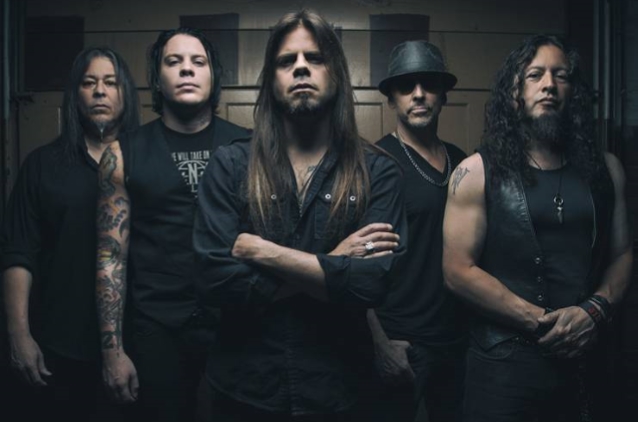
We know that Tate developed Mindcrime II without much contribution from the longstanding members of Queensrÿche composed of Michael Wilton, Eddie Jackson, and Scott Rockenfield (Chris DeGarmo left years earlier). On June 12, Tate filed a lawsuit against his former bandmates over the name and other Queensrÿche-related matters. On June 20, 2012 those same three members of Queensrÿche formally announced they were replacing Geoff Tate with Todd La Torre. Their formal responses to Tate’s complaint lay out an extensive history of their account of the band’s issues and disintegration (you can find and dig through many of these numerous and extensive court documents on anybodylistening.net if you are so inclined). Among other matters, Wilton asserts in his declaration signed July 7 of 2012 and filed July 9 of 2012, that “Susan Tate brought to the table the idea to record Operation: Mindcrime II. The band was hesitant and did not want to lessen the original” (page 7).
However, “Susan Tate and Geoff Tate hired a budget producer and took control without really any other input.” Wilton asserts that he was not a part of the writing process and was “told my ideas were not needed as the songs were now done.” He feels that “The final straw was when they refused to let me be a part of the final recordings and mixes.” “Some of my parts on my songs” were replaced he later discovered. Siding with Tate, Mindcrime II producer Jason Slater said in his own sworn declaration signed June 22, 2012 and filed June 29, 2012 that the other members didn’t contribute to the songwriting, wouldn’t show up for scheduled sessions, and were not able to learn and play their parts (1, 2). Whichever version you believe, the end result is the same: Rockenfield, Jackson, and Wilton were marginalized/excluded, for whatever reason or reasons, in regard to the development and recording of the album. Mindcrime II is more of a Tate solo project, and it represents Queensrÿche the band really in name only. Small wonder, then, that for many fans it did not live up to the excitement, depth, and quality of the original. The liner notes even misspell Pamela Moore’s name as “Pamela Moor” (CD catalogue # R2 73306).
The point of all of that background information is that one wonders if Tate conceived of and developed Mindcrime II as a way to capitalize on past successes and promote a new record that might otherwise might not seem as intriguing or attractive to fans. In short, was Mary’s death used again as a sales strategy? Since the writing/recording process was allegedly carried out in private—if not secret—we don’t know at what point the plot was finalized, but it does seem Tate was responsible for the basic narrative of the album. Was the writing of the album more difficult or did it take longer than Tate first expected? Did Tate anticipate working Mary more into the storyline and going into deeper detail about her death but as he got further into writing the album abandoned the plan? Or did he know before the August 2004 press release that Mary would just be a background character and the claim that Mindcrime II would explain her death was just promotional hype to sell the album? All of these scenarios seem equally possible.
Adding to the difficulties of completing the album, Queensrÿche were in personal and professional disarray. We now know from interviews and legal documents that there were internal divides, aesthetic conflicts, power struggles, personality clashes, management changes, declining sales, and, to top it off, Mindcrime II and the three studio album preceding it were all issued on different labels. Four different labels in a row for four different releases in a row does not suggest stability, success, and cohesiveness. Things were turbulent. How exactly to handle the finer details of Mary’s death would have been the least of the challenges facing Tate during this stressful and confusing time period.
Tate seems to have realized that he needed to fulfill the promise of the 2004 press release and do something to add to the public’s understanding of Mary’s death. At some point, he knew that wasn’t going to happen with Mindcrime II in the studio or live, so he makes the decision to shift that into the performances of the original Mindcrime record.
Whatever the reason why Mindcrime II didn’t add much to Mary’s character, didn’t explain her death, and the Evening With Queensrÿche Tour didn’t explain until its second leg that Mary’s suicide was ordered by Dr. X, the hype and anticipation surrounding the album paid off—at least in the short term—as the album debuted at #14 on the American Billboard Hot 200 chart. Whether it is a worthy successor to the original Mindcrime and belongs in a conversation with the earlier, classic albums is a matter of opinion.
Thus, the first Mindcrime leaves the identity of Mary’s killer as an open question but implies she was strangled to death. Queensrÿche leveraged that for Video: Mindcrime by suggesting her death was a result of suicide. Then, they use Mary’s death as a promotional tool a second time by bringing up the same question to promote Mindcrime II, even though the tour and not the album ends up delivering the answer. Mary’s death became part of the marketing campaign for Operation: Videocrime and Operation: Mindcrime II. Her death has provided a lot of value.
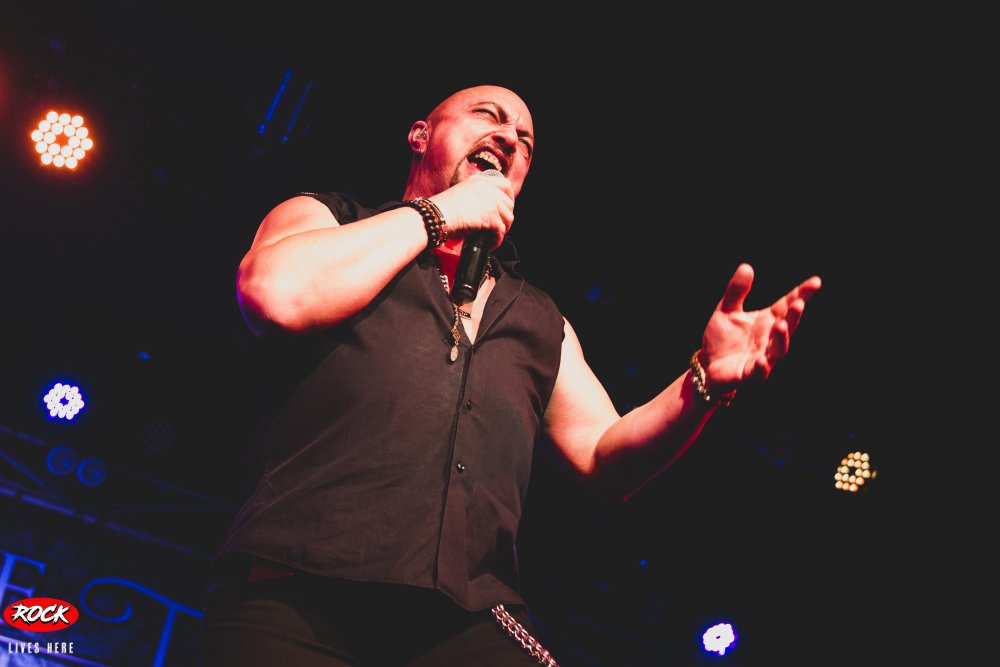
Tate realizes that the Mindcrime saga forms the cornerstone of his artistic legacy. He has talked over the years of making it into a movie and says there has been real interest from Hollywood at various points. In a November 29, 2017 interview with The Metal Voice, Tate says that the “Operation: Mindcrime story has been almost a movie at least six times in my memory. It’s actually being worked on now, as a screenplay, by a very famous screenwriter and very famous producer right now” (26:44 – 27:06). Wilton also mentions the movie idea on page fourteen of his July 2012 declaration. He recalls that “Scott Rockenfield got an email congratulating him on the deal that was made to have Operation: Mindcrime made into a movie. He contacted me and Eddie Jackson to see if we knew anything about this.” In his own declaration signed July 6, 2012 and filed July 12, 2012, Rockenfield discussed being contacted by Mike Kadrie at Zoetiflex Studios in 2010 about making Mindcrime into an “animated feature film” (page 7). He passed the information on to Susan and Geoff Tate who then in 2011 “told Mike to NOT continue conversations with me or the other band members.” According to Rockenfield, the studio could not raise enough investment money. However, talks got far enough along with Tate that he “signed the agreement for the rights” and “the deal also contained an advance of monies to secure this options right.” Further details and the series of emails exchanges between Rockenfield and Kadrie are included in Rockenfield’s declaration.
Although this particular sequence of events was several years after Mindcrime II, the hope for this type or deal could have been some of the earlier inspiration behind making a Mindcrime sequel, performing both albums live, and increasing the dramatic element of their performance. Did Tate think focusing so much on the Mindcrime narrative and expanding it would help push and secure a movie deal or perhaps a theatrical production? Incidentally, one also wonders if the ill-received Queensrÿche Cabaret, an adult-oriented Cirque du Soleil type show with “the band’s own wives and daughters,” was some sort of similar attempt—and one more stressor on the original lineup since the cabaret concept was rolled out just a couple of years before Tate’s ejection (Wilton 9).
As part of the settlement agreement the band (i.e., Rockenfield, Wilton, and Jackson) can continue to perform songs from Operation: Mindcrime, but Tate will “be the only one to perform Operation: Mindcrime and Operation: Mindcrime II in their entirety,” according to a 2014 statement released by the band and reprinted and excerpted on various websites. That Tate named his band Operation: Mindcrime after relinquishing/losing the Queensrÿche name and then made a trilogy of concept albums indicates how significant the Mindcrime idea is to him and how deeply it is imbedded in him. By naming his band after the album, he has literally branded himself with it.
It’s a sad and ironic possibility that Tate’s insistence on Mindcrime II, which he may have thought was going to propel him to the next professional phase of his career and take him to Hollywood instead drove the divide deeper and dropped him further down the marque.
In Nikki’s fantasy world, he finally has a chance to live with Mary, free from everyone and everything else. Different fans have different Queensrÿche fantasies, but in one of these Queensrÿche make a move similar to what Helloween recently did and keep their current members while reuniting with Tate and DeGarmo. In one of mine, Queensrÿche record another live version of Operation: Mindcrime but with La Torre on vocals and DeGarmo back playing guitar. In another, Queensrÿche—whatever the lineup—bring in Pamela Moore and dedicate an entire EP or album to the character of Mary, her background, her story, her words, and her voice. At last, she steps out of the shadows.


